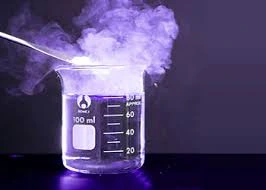IUPAC Name
Phosphorus Trichloride
Cas Number
02/12/7719
HS Code
28121021
Formula
PCl3
Appearance
Colorless to Light Yellow Liquid
Common Names
Phosphorus (III) Chloride
Packaging
As per customers request
Brief Overview
Phosphorus trichloride is a chemical compound of phosphorus and chlorine, having chemical formula PCl3. It is the most important of the three phosphorus chlorides. It is an important industrial chemical, being used for the manufacture of organophosphorus compounds for a wide variety of applications. It appears as a colorless or slightly yellow fuming liquid with a pungent and irritating odor resembling that of hydrochloric acid. Causes severe burns to skin, eyes and mucous membranes. Very toxic by inhalation, ingestion and skin absorption. Reacts with water to evolve hydrochloric acid, an irritating and corrosive gas apparent as white fumes.
Manufacturing Process
Hoechst continuous process. In a Hoechst continuous process, molten white phosphorus and gaseous chlorine react in previously produced phosphorus trichloride. The formation of phosphorus pentachloride is prevented by the presence of a small excess of phosphorus. The heat of reaction, ca. 10 times the heat of evaporation, keeps the system at its boiling point, and the phosphorus trichloride distills off. The vapors are fractionated as reflux takes place, and the PCl3 condenses in air-cooled condensers. The rate of removal of PCl3 (i.e. the production rate) is equivalent to the feed rate of phosphorus and chlorine. The process is controlled by the boiling temperature, which is determined by the phosphorus content. The rate of chlorine flow is fixed, and the phosphorus feed rate is adjusted manually. The phosphorus trichloride produced contains no free phosphorus and needs no further treatment.
Prepared from red phosphorus and dry chlorine in the presence of refluxing PCl3, with continuous removal of PCl3 as it is formed to avoid the formation of PCl5.
P4 + 6 Cl2 → 4 PCl3
Manufacturing, Plastics
Oxidation of PCl3 gives POCl3, which is used for the manufacture of triphenyl phosphate and tricresyl phosphate, which find application as flame retardants and plasticisers for PVC. They are also used to make insecticides such as diazinon. Phosphonates include the herbicide glyphosate.
Manufacturing, Chemicals
PCl3 is the precursor to triphenylphosphine for the Wittig reaction, and phosphite esters which may be used as industrial intermediates, or used in the Horner-Wadsworth-Emmons reaction, both important methods for making alkenes. It can be used to make trioctylphosphine oxide (TOPO), used as an extraction agent, although TOPO is usually made via the corresponding phosphine.
Process Regulator
PCl3 is also used directly as a reagent in organic synthesis. It is used to convert primary and secondary alcohols into alkyl chlorides, or carboxylic acids into acyl chlorides, although thionyl chloride generally gives better yields than PCl3.
